
With 2019 coming in hot, don’t find yourself out of the loop using techniques that will hurt your marketing efforts, or worse, cause a mass extinction of ROI. Things are changing fast and it can be hard to differentiate while maintaining a sense of trust with your audience.
First, you can let out a sigh of relief because two things will remain constant:
- Content marketing will be important, even more so than this year.
- Content creation and distribution will continue to change.
As long as you evolve the way you create and distribute your content and keep pace with trends, content marketing will continue to be an authentic, useful, and engaging method that gets results.
Evolve the way you create & distribute #content to get results w/ #contentmarketing. @markyourplace
Click To Tweet
So what are some trends to avoid in 2019?
1. Focusing solely on typed search queries
Typed searches may be on the endangered list as conversational commerce rises. People are searching differently. Nearly 50% of Americans use voice assistants. Voice already prompts one of every five Google searches on mobile devices, and analysts are not only predicting this to increase, they’re harping that a world with screen-less searching is around the corner.
It makes sense. As younger generations grow up using voice-responsive devices and search capabilities, talking, not typing, becomes the norm. One study shows 71% of 18- to 28-year-old adults use voice assistants compared to 39% of people ages 44 to 53. Plus, other research shows that between 2014 and 2017 the number of people using voice search to find a deal, local product, or service increased 75%.
The other day, I saw a Bose headphone commercial that featured a young woman on a crowded bus telling her headphones to add bananas to her shopping list. Talking to yourself in public is rapidly losing its stigma. At the end of the day, it’s easier to talk than type and people will speak more and more to Google Assistant, Alexa, Siri, and tap the microphone to talk into the Google search bar in the years to come.
What to do in 2019
The way people speak into a phone is different from the way they type in a search bar. Search queries need to match natural language. Instead of competing for keywords, you may want to consider targeting long-tail sentences people are likely to say when they search. In short, you should answer questions the way a human being would. Also, keep these tips in mind:
- Use longer natural phrasing in your titles and headers.
- Take the conversational nature of voice searches into consideration during keyword research.
- Optimize natural language content to appear on top if you’re investing in “near me” searches.
- Use structured data, site links, and rich snippets to help Google provide the right answer people are searching for.
Optimize natural language #content to appear on top if you’re investing in “near me” searches. @markyourplace
Click To Tweet
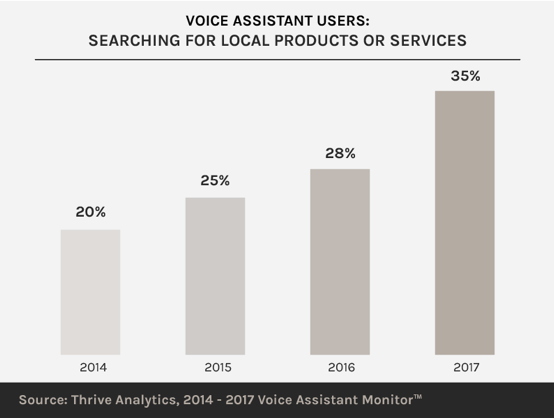
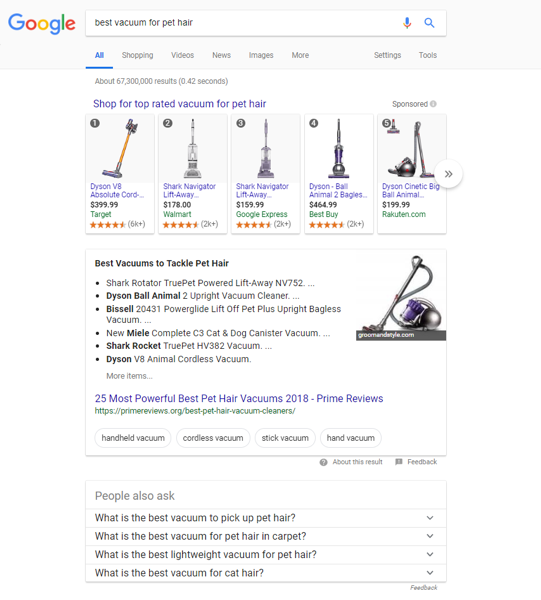
HANDPICKED RELATED CONTENT:
2. Relying on traditional video
In 2016, it became clear that videos, GIFs, and animations were the key to grabbing attention in a news feed filled with copy and static images.
Looking forward to 2019, movement is still key to grabbing the wandering eye, but videos don’t have to be planned or scripted. In fact, they shouldn’t be. Live video is on the rise for a hungry audience that wants to be in the moment with their favorite brands. It can be more candid, honest, and most importantly, fun. When you think about it, watching a recorded video means you’re always watching the action after it happens.
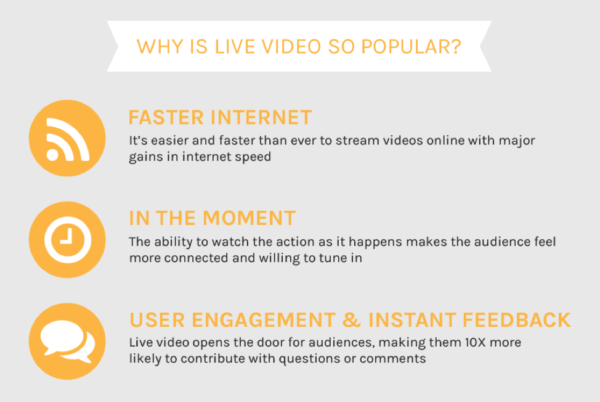
This graphic is modified from Netimperative
A survey by Livestream found that 82% of respondents would rather tune in to a brand’s live video than read its social media posts. YouTube, Facebook, and Instagram’s live video services had a huge impact this year, with 64% of consumers saying that watching a Facebook video influenced a purchase decision.
And with people spending as much as three times more time watching live video than traditional video on Facebook, it’s time for marketers to pay attention.
People are spending 3X more time watching live #video than traditional video on #Facebook. @markyourplace
Click To Tweet
What to do in 2019
Marketers should consider adding live video to their 2019 social media strategy. Creating live video content in-house can be easier because the audience doesn’t necessarily expect it to be polished, edited, or expensively produced – and because everybody carries a high-end video recorder in the form of a smartphone. Some ideas for your next live video could include:
- Hosting Q&A sessions with customers or staff
- Live interviews with past or current clients, service providers, or local influencers
- Product demos and unboxing videos (reach out to an unboxing influencer on YouTube for your packaged product)
- Events, trade shows, ribbon cuttings, and really any event that showcases your business or the community
HANDPICKED RELATED CONTENT:
3. Marketing to the masses
It can be tempting, and even common practice, to create one-size-fits-all marketing strategies. However, putting in the extra effort to personalize your marketing to the individual can deliver exceptional experiences and leave a lasting impression. These personalized touches can be small and have a big impact, like being greeted by name at your favorite restaurant.
Picture this: A visitor to your site enters their name and email to download an enticing infographic about technology trends. The next time they load the page, they’re greeted by name. Not only that, but your site provides several links to more resources about top technology trends.
The effort to personalize can make your brand stand out and gain trust with your audience:
- Personalized account-based marketing led to four times more conversions than generic marketing in a Salesforce study.
- 59% of shoppers who have experienced personalization believe it noticeably influenced purchasing decisions.
- Companies also report direct benefits. Co-operative Travel increased visitors to its site by 95% and saw a 217% revenue increase after it implemented personalization on its website. BMW personalized MMS messages to 1,200 customers and improved conversions by 30%.
The effort to personalize can make your brand stand out & gain trust with your audience. @markyourplace
Click To Tweet
The value of personalized content is the reason more marketers recognize the opportunities in content marketing, influencer marketing, and other methods that deliver what their audience members need or want.
What to do in 2019
Personal data doesn’t have to be collected all at once. Start with small asks for name and email in exchange for more information and compelling content. Or concentrate on personalizing for existing clients and names in your database. Consider this a slow burn, using the data you have to start lead nurturing campaigns and adding more personal data as the relationship grows. In this way, you build trust and lessen the resistance people have to sharing information. You can then put the data to work in many ways (just don’t creep them out by getting unnecessarily personal):
- Personalize calls to action in your content and on your site.
- Surprise and delight members of your audience by using their names in different ways, like a first-name greeting on your home page.
- See 45 more examples of personalized marketing for inspiration.
4. Ignoring Privacy Protections
Given that you’re collecting data for personalization, you also should be thinking about privacy regulations, right? Customers are demanding more transparency in terms of how their data is used, stored, and shared, yet many businesses continue to collect and store the information without a thought. With new EU regulations that affect many U.S. businesses (here’s looking at you, GDPR) and a growing frustration and resentment from the public because some companies failed to protect their customer data, information protection is a competitive advantage (55% of consumers say they have decided against buying something due to privacy concerns). And young adults are most likely to use strategies to be less visible online, according to Pew Research Center.
55% of consumers say they have decided against buying something due to privacy concerns via @KPMG.
Click To Tweet
What to do in 2019
Being able to reassure members of your audience that they have control over their data is a growing selling point. Additionally, given that California already has its own version of GDPR, it’s high time to stop putting off data protection and transparency. It’s easier than you think to get started:
- Ensure that your privacy policy includes definitions and disclosures about cookies, third-party data collection (e.g., Google Analytics) and other information your site collects on visitors. Privacy policies are straightforward and follow a familiar format. Check out Tesla’s for inspiration, though most don’t have to be nearly as expansive.
- Add a short message when visitors submit an email or contact form. Something like, “We respect your privacy. Read our privacy statement concerning the limitations on our use and disclosure of your information.”
- Implement a plan for when someone requests to see, change, or delete his or her data (including email addresses) to be compliant with GDPR.
HANDPICKED RELATED CONTENT:
5. Relying on long content
Over the recent years, bloggers are writing longer, likely responding to research that shows longer posts rank higher in search engines.
But if your goal is to engage an audience wading through a sea of content, being highly concise in your messaging will have the best results. Visual content also is critical. Posts with visuals earn 94% more visits and engagements than posts without visuals.
It’s not just about keeping it simple and using images. You should also brainstorm how to make it unique. For example, consider using print because everyone else is going digital.
What to do in 2019
Go ahead and write a few long-tail blog posts with 1,000-plus words. But also create snackable content for those on the go. Write short, engaging posts. Create shareable in-post graphics.
Conclusion
Make sure you’re not still content marketing like it’s 2018. If you monitor the trends, you also should observe their evolution – not every tactic, approach, etc., remains at the top of the curve. In 2019, rethink the use of the keyboard and recorded video, re-evaluate your outreach to the masses, go transparent, and amend your long-content approach.
What other content marketing concepts, tactics, etc., are on the downward trend? Please share in the comments.
Think like it’s 2019. Sign up now for updates on ContentTECH scheduled next April in San Diego.
Cover image by Joseph Kalinowski/Content Marketing Institute
The post Are You Still Content Marketing Like It’s 2018? appeared first on Content Marketing Institute.
from Content Marketing Institute https://ift.tt/2D6aytF
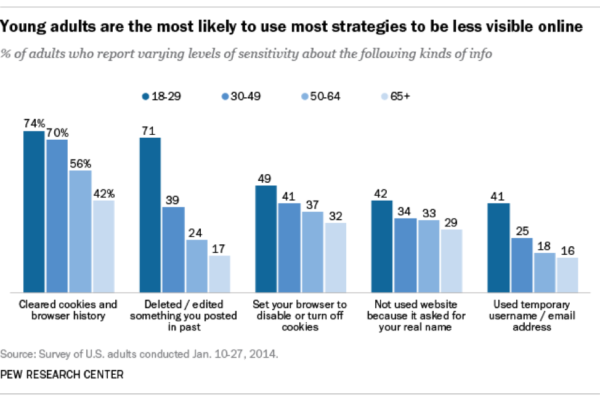
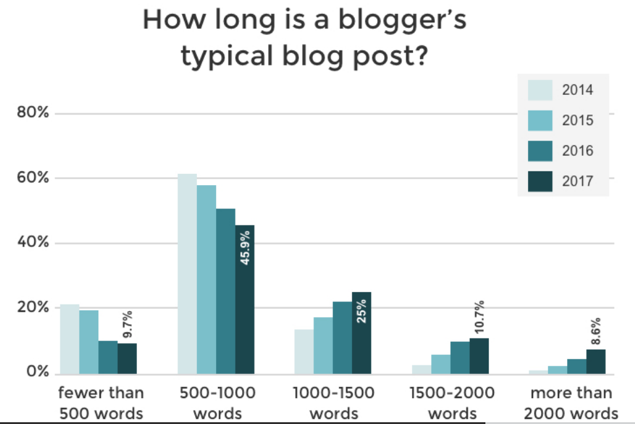

No comments:
Post a Comment